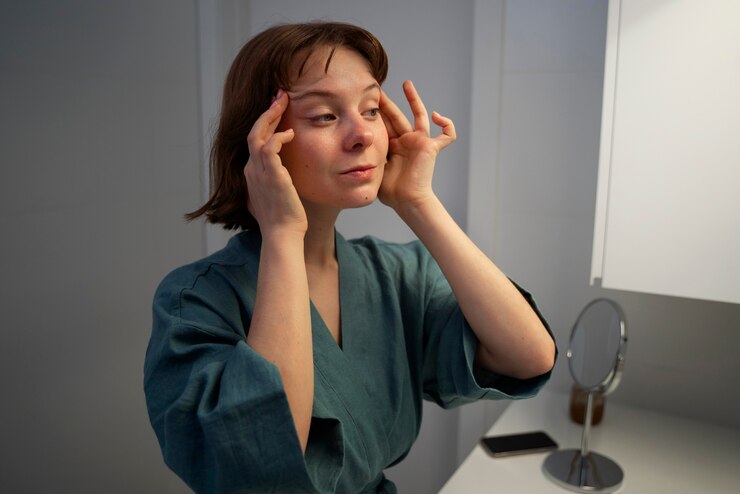Lazy eye, or amblyopia, is a condition where one eye has weaker vision because the brain and eye fail to work together properly. While it’s commonly identified in children, it can persist into adulthood if untreated. The good news is that advancements in non-surgical treatments have made it possible to effectively manage and even reverse lazy eye at any age. This guide explores the best non-surgical options, highlighting their benefits and the latest updates in the field.
Understanding Lazy Eye and Its Challenges
Lazy eye occurs when the brain favors one eye, suppressing input from the weaker eye. Over time, this can lead to poor depth perception, reduced reading skills, and difficulties with activities requiring hand-eye coordination. Early diagnosis is key, but modern therapies are proving that even adults with lazy eye can achieve significant improvement.
Non-Surgical Treatments for Lazy Eye
1. Patching
Patching involves covering the stronger eye with an eye patch to encourage the weaker eye to function more actively. Typically prescribed for children, this method is most effective when combined with engaging activities that stimulate the brain-eye connection. Recent updates suggest shorter patching durations (2–4 hours daily) can achieve results comparable to longer durations, reducing discomfort and resistance.
2. Vision Therapy
Vision therapy is a structured program designed to improve visual skills such as focusing, tracking, and binocular coordination. It involves:
- Eye Exercises: Activities that target muscle control and eye-brain communication.
- Interactive Software: Computer-based programs and virtual reality (VR) games tailored to stimulate the weaker eye and promote balanced vision.
Advances in vision therapy have shown great promise, particularly for adults. Studies indicate these methods can strengthen binocular vision up to three times faster than traditional techniques like patching.
3. Specialized Glasses and Filters
Instead of using a patch, some patients benefit from glasses with filters that blur the vision in the stronger eye. These glasses are especially useful for children, as they are less intrusive and more socially acceptable. Corrective lenses addressing refractive errors (like myopia or astigmatism) also play a critical role in lazy eye treatment.
4. At-Home Lazy Eye Training Tools
With the rise of digital healthcare solutions, at-home tools such as mobile apps and online programs are gaining popularity. These include:
- VR Platforms: Engaging tools that offer interactive vision training exercises.
- Mobile Games: Designed to target and stimulate the brain-eye connection in a fun and interactive way.
- Occlusion Glasses: Partial blurring of the dominant eye to encourage balanced visual development.
5. Binocular Vision Therapy
Unlike traditional patching, which treats one eye at a time, binocular vision therapy focuses on training both eyes to work together. This method is particularly effective for adults, as it addresses suppression—when the brain shuts off input from the weaker eye. Modern therapy combines visual stimuli with engaging tasks to ensure better compliance and faster results.
The Role of Technology in Treatment
Recent innovations have revolutionized lazy eye treatment, making it more accessible and effective for all age groups. Some notable developments include:
- Virtual Reality (VR): VR-based exercises offer immersive environments to stimulate the weaker eye. These programs have been especially successful with adults, improving both visual acuity and depth perception.
- Gamified Therapies: Interactive games designed for amblyopia treatment increase motivation, particularly among children. These games help retrain the brain to process input from both eyes simultaneously.
Benefits of Non-Surgical Treatments
- Improved Vision: Enhances visual acuity and depth perception in the weaker eye.
- Convenience: Most treatments, such as vision therapy and specialized glasses, are non-invasive and can be done at home or under minimal supervision.
- Adaptability: Modern techniques like VR games cater to both children and adults, making treatment more engaging.
- Long-Term Impact: Treating lazy eye early and effectively reduces the risk of recurring symptoms and complications later in life.
Recent Findings and Data
- Studies have shown that binocular vision therapy improves visual function 3–6 times faster than traditional patching alone.
- Approximately 40% of patients who fail to respond to patching see significant improvements with interactive vision therapy.
- VR and gamified solutions have demonstrated success rates exceeding 75% for adult patients with lazy eye, making them a promising option for long-term treatment.
Challenges and Limitations
While non-surgical treatments are highly effective, they do require commitment and consistency. Some challenges include:
- Compliance: Younger patients may resist patching or repetitive exercises.
- Time-Intensive: Vision therapy programs often require multiple sessions and regular practice over several months.
- Accessibility: Advanced options like VR platforms may not be readily available in all regions.
Conclusion
Non-surgical treatments for lazy eye have advanced significantly, offering effective solutions for both children and adults. From traditional patching to cutting-edge VR therapy, there’s a range of options to suit different needs and preferences. Consultation with an optometrist or vision therapist is crucial to determine the best treatment plan tailored to your condition.
By starting treatment early and staying consistent, you can significantly enhance your visual abilities and quality of life without resorting to surgical interventions.

